One of the commonly listed “must-see” activities for backpackers in Australia is to head off to Uluru and spend the evening there to watch the sunset. Often hand in hand with a bite to eat and a glass of champers. There are a whole host of tour providers that accommodate this experience, and it usually ends up with you experiencing a blistering red and orange sunset over the rock. It’s a truly fascinating experience, and you see Ayers Rock exactly as it’s portrayed in postcards and photographs.
These are usually taken from a viewing spot. A pretty good spot actually, one that gives you a clear sight of Uluru. As you count down towards sunset you start to see the viewing parties rocking up. Coaches begin to pull up and the tourists pile out. By the time the sun goes down you usually have quite a crowd of onlookers. It’s a unique experience, and one that sticks with you. You can glimpse a few of the coaches in the next photo, as well as the tour group and a bottle of fizzy. All good. Granted it isn’t particularly sunsetty at the point I took it.
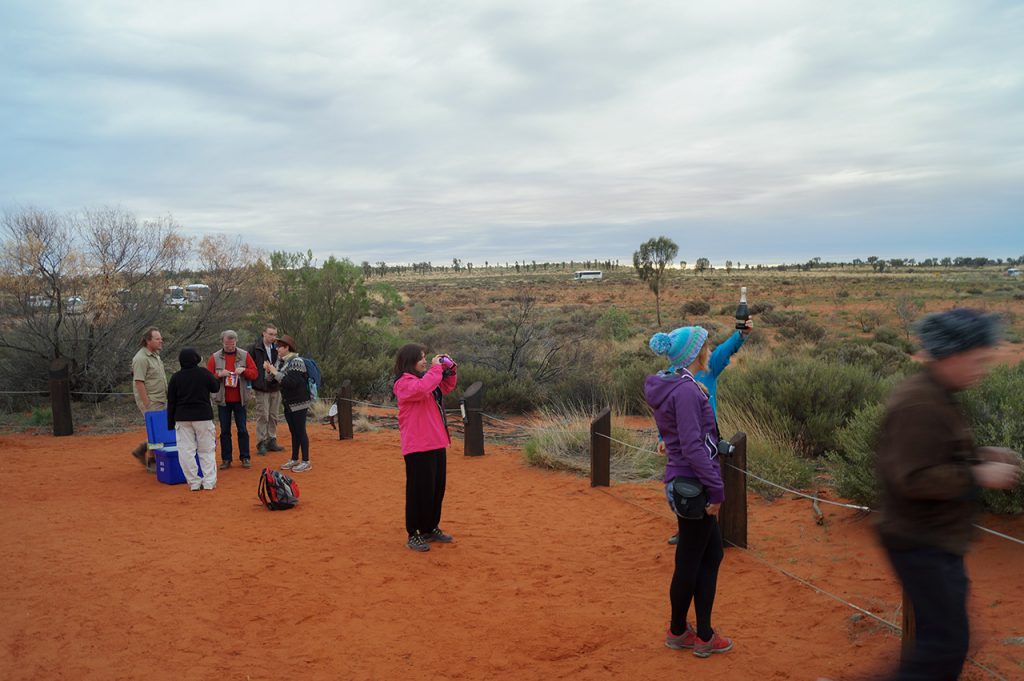
This is all for sunset though. It’s what Uluru is famed for. Don’t get me wrong, it’s brilliant. That said, you shouldn’t let the amazing sunset take away from what this Aboriginal site has to offer. Sunrise is just as good, perhaps even better when you account for the fact that there are far fewer people around. When you get up close to the rock and head along either the 5 or 10 kilometre walking track, you’ll get a feel for the significance of this spot – It’s almost mystical.
If you want to do it “right” you’ll need to get to Uluru for first light. It’s worth it though – particularly if you didn’t get much of a sunset the night before. Who needs filters when the sky lights up in these colours?
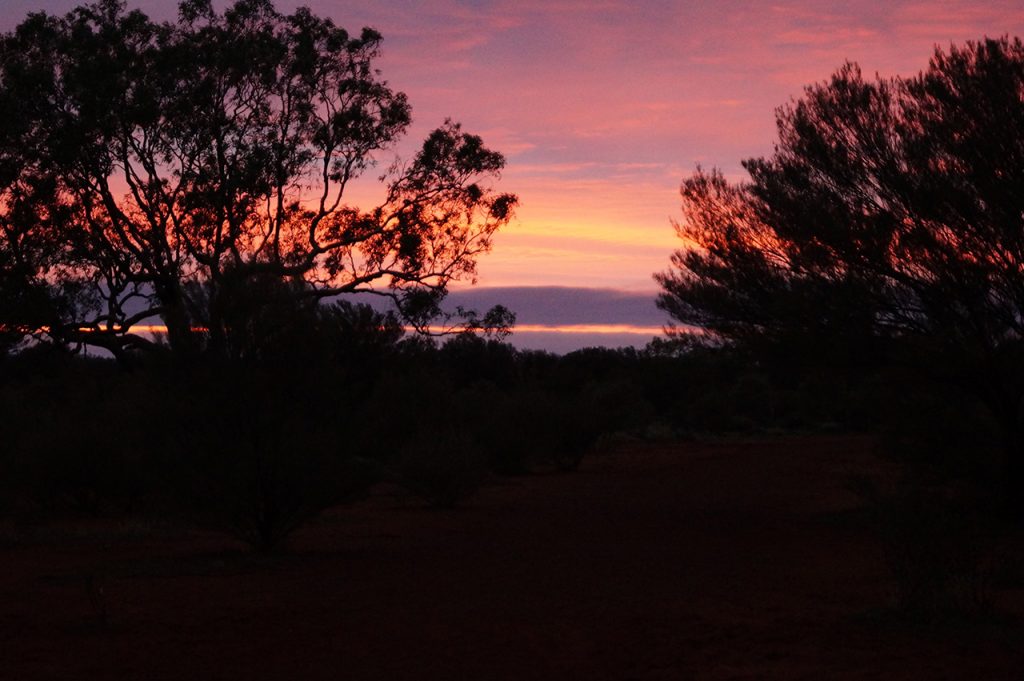
It doesn’t take long to brighten up, even in the winter. You’ll still be able to watch the sunrise from most parts of Uluru, after all it is mostly flat outback that surrounds the rock. You might need to move around a bit to get a decent sight through the trees and shrubbery though.
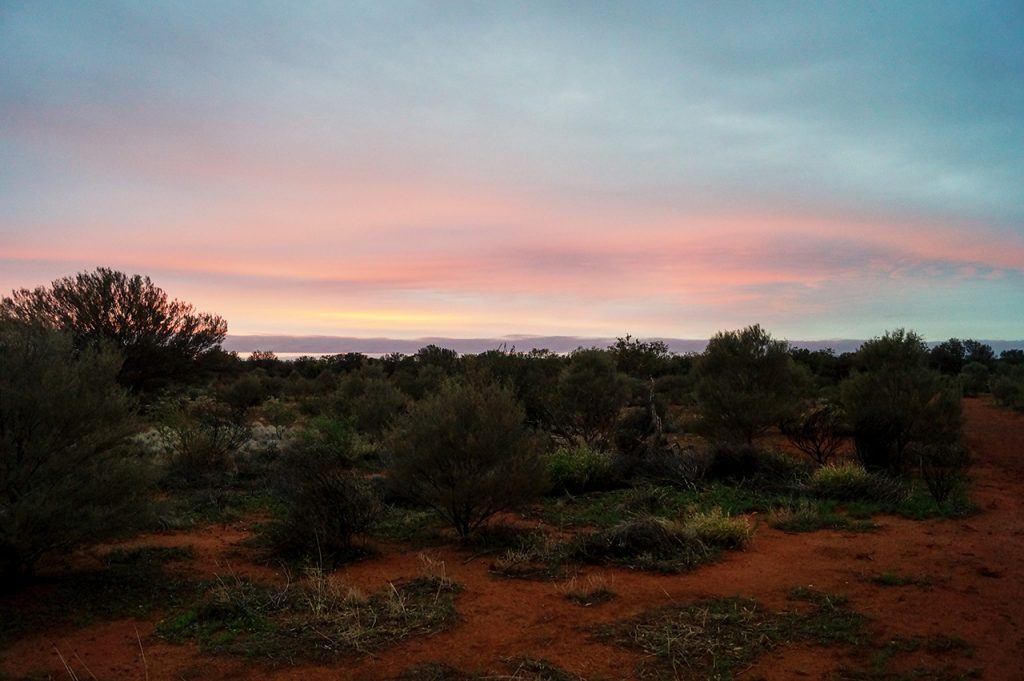
In the outback it doesn’t take particularly long for it to warm up. The Uluru basewalk track runs either 5km to go halfway around – and you can be dropped off or picked up by coach at these points, or the full trek is 10km of brilliant views. As you’ll no doubt have heard hundreds of times, make sure you’ve got plenty of water with you. It gets hot. It gets hot fast. You’ll need to stay hydrated. There are actually “shade-stations” (I’m coining this phrase) where you can take a break and rest up too. They’re quite funky wooden structures. I actually wouldn’t mind having one built at home. Really comfortable.
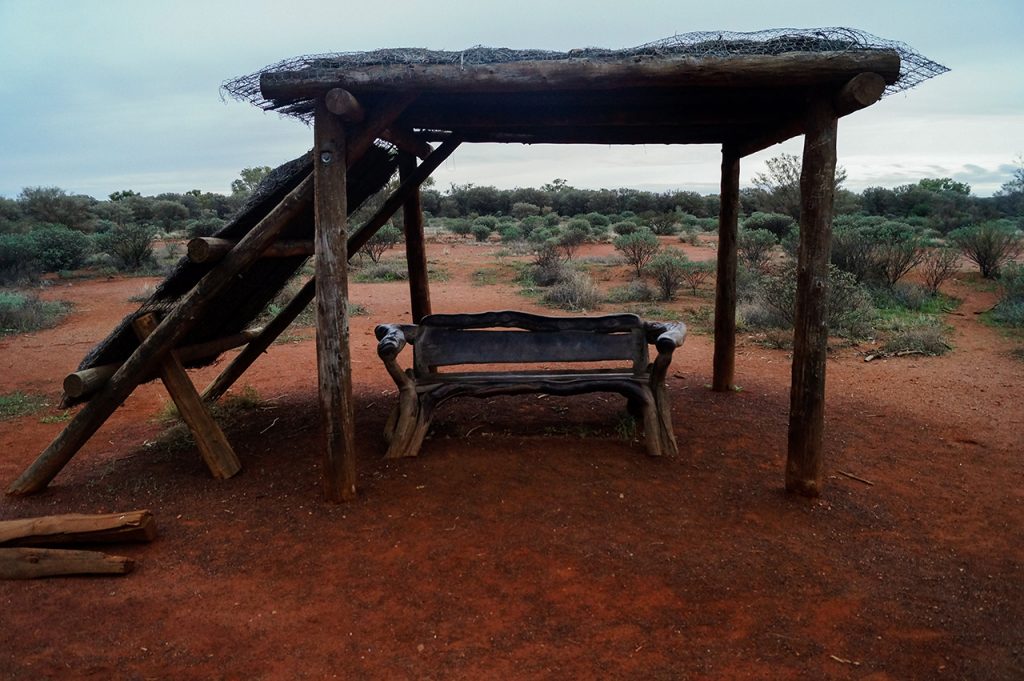
I guess it’s less-seen in the summer but you can also find water at Uluru. Not what you’d probably expect with it being a huge rock in the middle of a scorching desert. It happens though. If your sunset gets ruined by clouds and rainfall (I say ruined loosely, it’s still great), then there’s a chance you’ll get some rainfall and that’ll make your trip a little bit more special. Trekking around the rock you’ll encounter a couple of water pools – perhaps even with some of the local wildlife nearby in search of water. It tends to flow down the rock, and the erosion is what causes a bunch of the weird and wonderful shapes you’ll see.
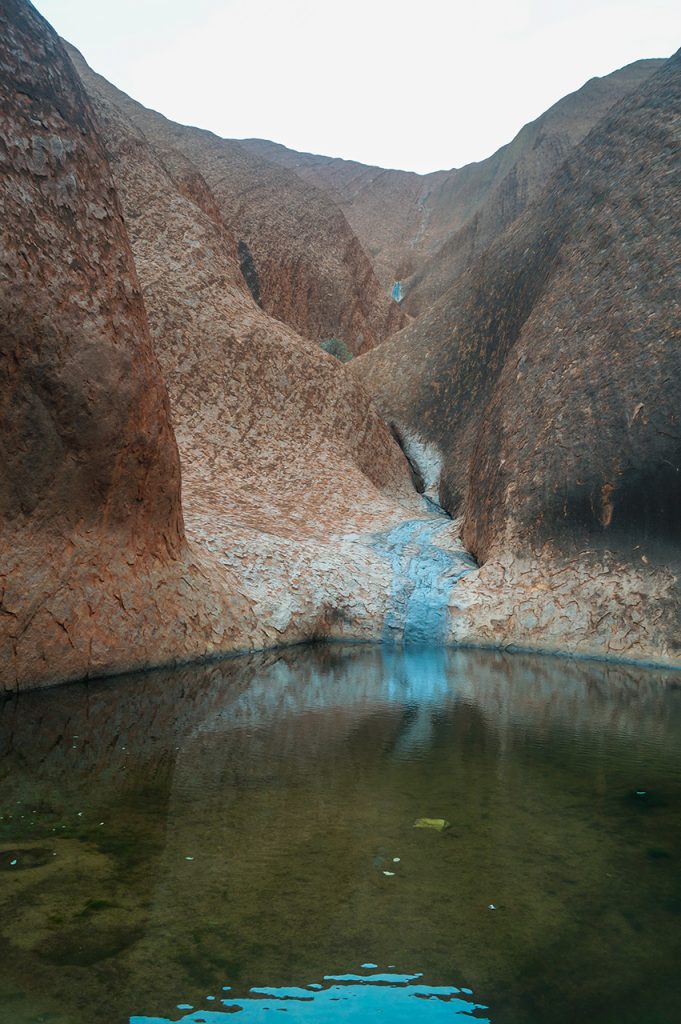
We actually played a game to try and look for objects in the face of the rock. You have to use your imagination though, but if you really try you’ll see some random things in the cliff-face. My personal favourite was one of the droids from Star Wars Episode 1. It was more just the droids head, but it was a really close match. The blackened areas made up the eyes, and a gaping cut in the rock acted as the nose/mouth or whatever it is on those droids. I’m saving the best pictures for another time (you’ll understand when you see it), so here’s a bit of a side-shot, off angle thingy.
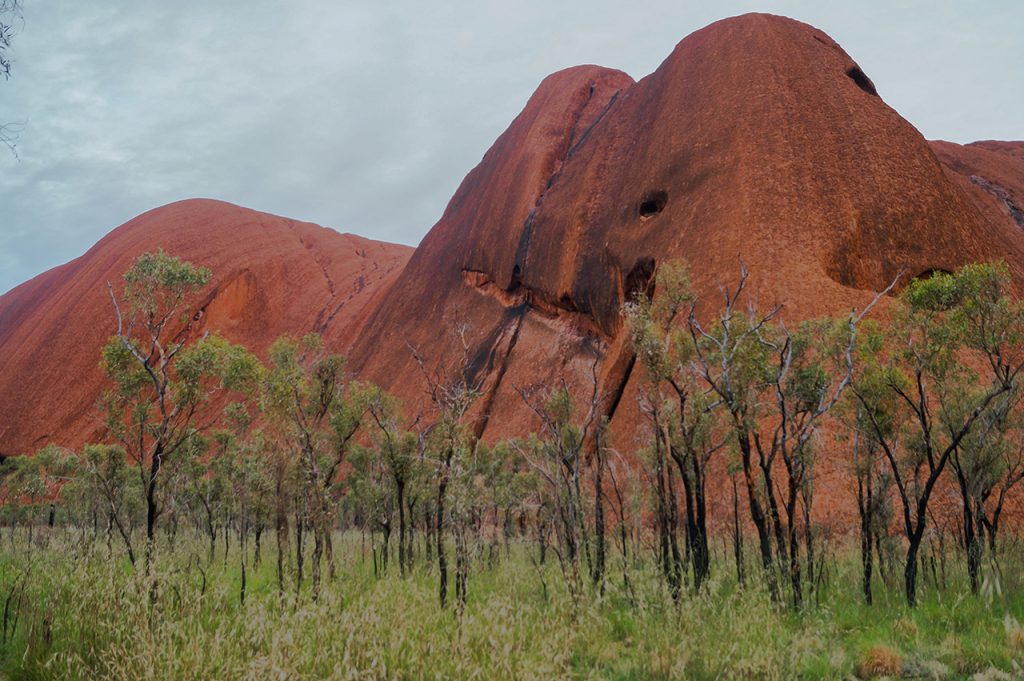
At Uluru there are parts of the track where you’re asked kindly to not take photographs due to the cultural significance to local Aboriginals and their heritage. For this reason there are a few pictures I have (nearby, not taken in that zone, I’m not that inconsiderate) that I won’t show. It makes up one of the more interesting parts of Uluru, and if you only get to see it from a viewing platform you’ll be missing out on a huge part of the history of Uluru and why it’s so culturally significant. Which is pretty much the biggest and most interesting reason for going (aside from seeing it in all it’s glory and getting to brag about it afterwards).
I was lucky enough for a local to share a story, complete with hand-drawn illustrations in the sand, which really completed the trip for me. That’s the point where I learned about the sex-bird, but that too is a story for another day. I also had to swiftly make it back to the bus afterwards to save myself from a long trip to the loos – but hey, better than being dehydrated. Right? You probably didn’t need to know that but tough, it’s the little details that make it what it is 🙂
Hopefully those of you that have been during the warmer, drier months, or are simply better photographs than I, will have some brilliant photos to share. Let us see them in the comments!
And most importantly, if you do decide to visit; Enjoy the trip!